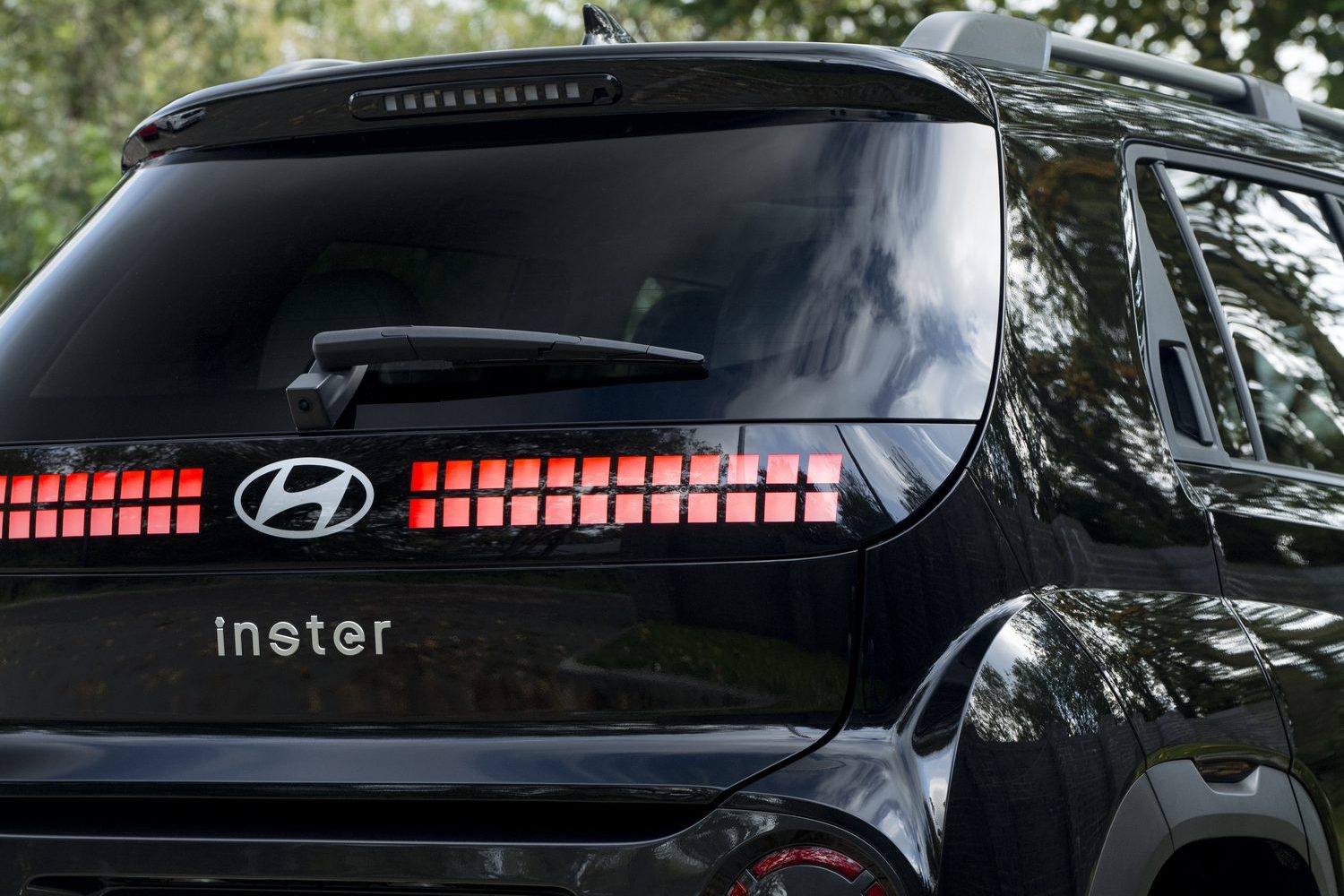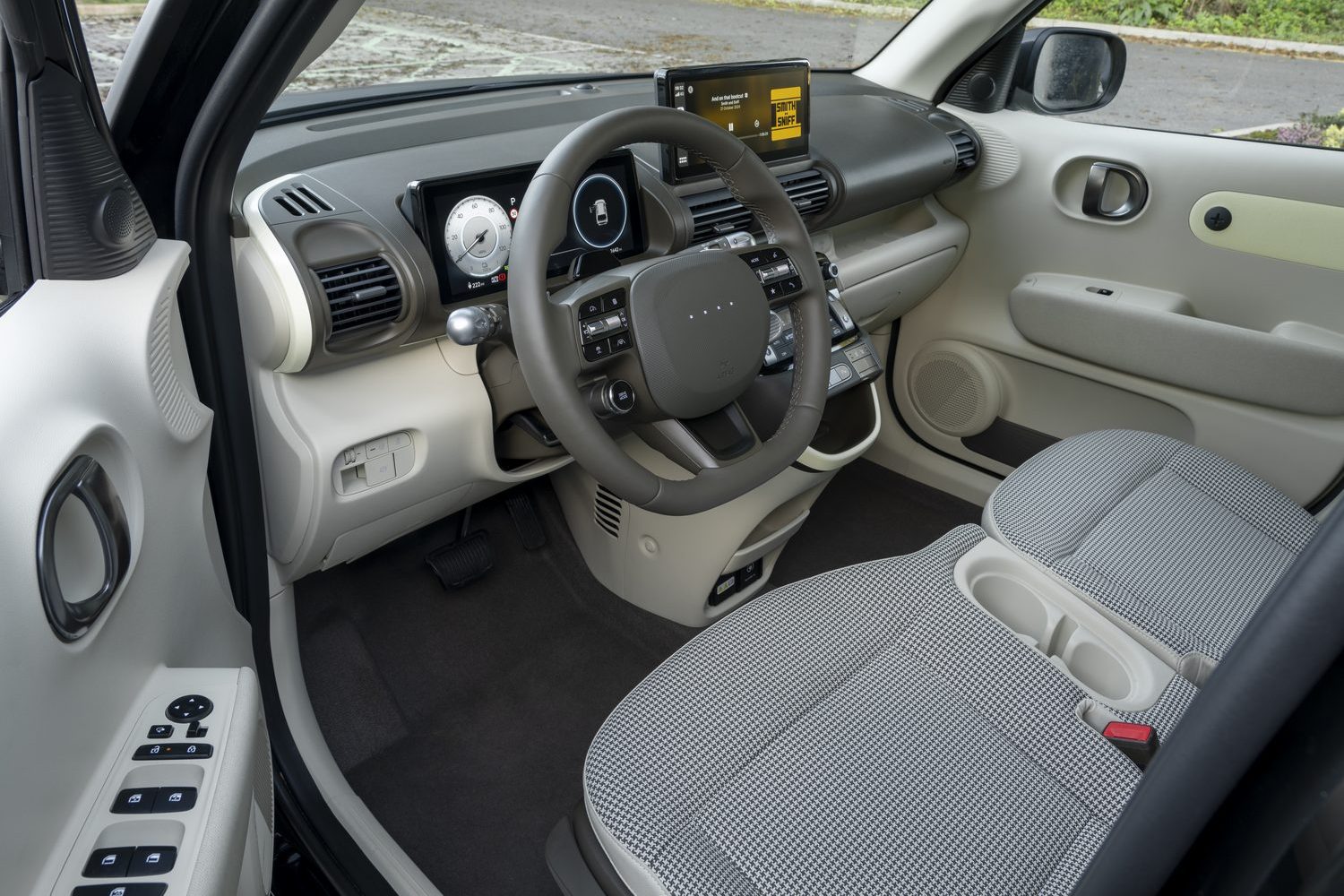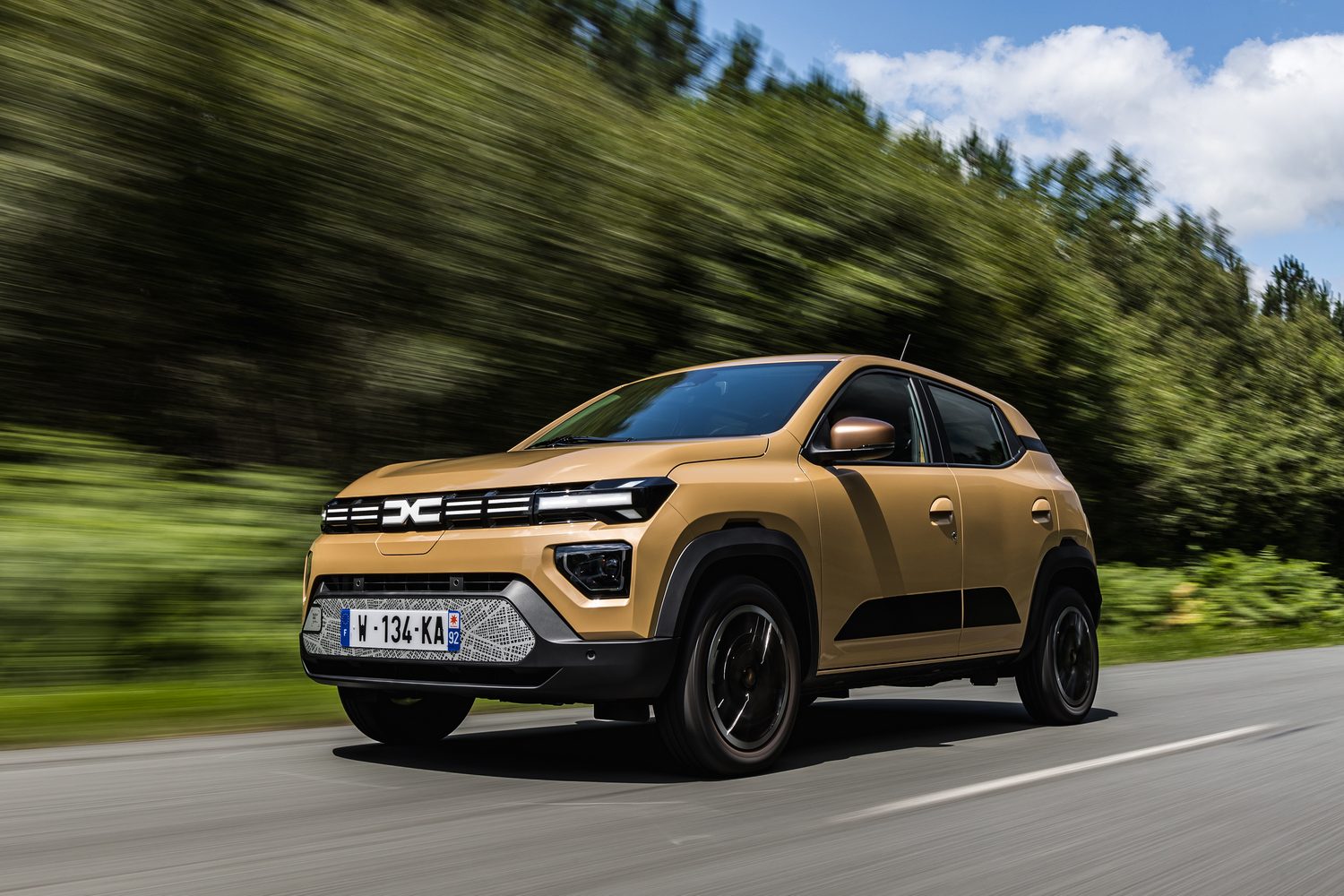There seems to be a profusion of affordable and stylish little electric vehicles (EVs) lately, and here’s another to join the fold - it’s the Hyundai Inster, its bodywork based on a Korean-market model called the Casper (is it a friendly ghost?). It’s sitting in that narrow gap between ultra-cheap, short-range EVs such as the Dacia Spring and forthcoming Leapmotor T03, and then the more mid-range stuff such as the Citroen e-C3 and the Renault 5 E-Tech. The Inster is sized - and presumably priced - to fit in between the Hyundai i10 and i20.
We’ve driven a pre-production Inster in left-hand-drive form over in the UK to see if it can hold its head up high in an ever-more-competitive sector.

How much is the Hyundai Inster in Ireland?
Hyundai has been sensible with the pricing of the Inster. At the base of the lineup is the single version offered with a 42kWh battery, sold in 'Signature' specification for €18,995 (after the SEAI grant and VRT relief), while the 49kWh battery is in the Inster Elegance for €21,995 - or €22,590 if you want the two-tone paint finish.
What’s the styling like on the Hyundai Inster?

Both angular and cute at the same time, and wearing some of the squared-off detailing seen on Hyundai’s larger EVs (that strip of pixellated lights on the Inster’s rump is nigh-on straight off the Ioniq 5, for instance), this is an appealing car visually, albeit there’s more than a whiff of the Suzuki Ignis (not, in and of itself, a bad thing) when you look at the Korean machine directly in profile.
It has a longer wheelbase than the petrol-powered versions of the Hyundai Casper on which it is based, in order to fit the battery pack into its chassis and to give it more rear legroom, but while it’s bigger than an i10 in terms of length, height and the space between its axles, the Inster is 70mm narrower, which does give it a slightly unusual proportionality from certain angles. Yet with its round daytime running lamps, skid-plate styling front and rear, squared-off wheelarches housing 17-inch alloys (on this test car, at least), and roof rails up top, the Inster is certainly interesting to look at.

A look inside the Hyundai Inster
While the Inster’s cabin is built to a budget, and not particularly large, Hyundai has done its best to give it some character. Whether the vast plains of commode-like beige plastic studded with a chocolate-brown dash insert of our test vehicle will be to all tastes or not is a moot point, because you don’t have to have it in this specification if you don’t want. And yes, much of said plastic feels hard and cheap and like it is not backed up by much in the way of sound-deadening, but it actually all looks quite cheerful inside.
This is because Hyundai favours a houndstooth upholstery, while there’s a little ledge cut into the fascia and an unusual central console for the climate controls which all give the cabin of the Inster a modicum of character. Indeed, there’s plenty of physical switchgear in the Inster, which is a boon for intuitive operation, and we very much like the cupholders that are ensconced by the front seats.

However, this is a direct corollary of the narrowness of the car, because while the chairs are comfortable and there’s a (generally) good driving position and excellent visibility out of the relatively massive glasshouse, if you’re a larger driver then you’ll feel weirdly abutted up to the door cards like you’re driving a miniature version of the old Land Rover Defender. It’s not quite as uncomfortable as that old brute was, but there’s not a lot of room for your outermost elbow when you’re behind the wheel.
However, the rear legroom is astonishing for a car this small. It genuinely looks like six-footers-plus would be comfortable back there as the headroom is also excellent, albeit there are only two seats - the Inster is a strict four-seater, again due to its physical thinness.
Boot space is quite small at 280 litres as standard, but the rear row of seats can slide forward if you need more cargo area to liberate up to 351 litres without folding the 50:50 split bench down. Do that, though, and 1,059 litres of room are on offer.

The Hyundai Inster’s on-board technology
It might well be a new model targeted squarely at the value end of the market, but Hyundai is a company known for providing lots of kit for the cash, so the Inster comes with some impressive tech features. Chief among these are the twin 10.25-inch screens, one for the instrument cluster that looks almost every bit as good as the one you’d have in a Hyundai Ioniq 5, and another for the main infotainment.
This is blessed with Apple CarPlay and Android Auto as standard, as well as navigation, while there’s also rear parking sensors with a reversing camera and dynamic parking control, smart cruise control with stop/go, keyless entry and go, climate control, automatic lights and electrically adjustable and heated door mirrors.

Step it up a level and we should see front parking sensors, LED exterior lighting, LED multifunction steering-wheel lights and even 64-colour ambient lighting. There’s also the option of a Tech Pack (no confirmation if that will be offered or called that in Ireland) that’ll fit an internal three-pin plug socket for vehicle-to-load functionality, as well as a digital smart key on your smartphone, so the Inster is properly equipped with some of the most desirable electronic gear.
Driving the Hyundai Inster
There are two models in production, one with a slightly smaller battery and a 97hp motor, and then another that is known as the Long Range (see next section below) with a beefier 115hp to play with. Either one has 146Nm, propelling anything from 1.35 to 1.4 tonnes of bodywork. This means the 97hp Inster can do 0-100km/h in 11.7 seconds with a 140km/h top speed, while the Long Range improves the former to 10.6 seconds and the latter by 10km/h, and it’s the 115hp variant we were given to sample.

Just by looking at its tall, narrow body and comparatively slender tyres, you might form a prejudicial impression of how the Inster is going to drive. Well, if so, abandon your notions - because it’s a lot better than you’re probably thinking. While we’re not about to say it’s in any way fast, the 115hp Hyundai EV has enough ‘scooting speed’ (0-50km/h) to get about town smartly, while it’s not even lost as it leaves built-up areas and heads into the 80-90km/h zone. Admittedly, acceleration tails off markedly around 100km/h and beyond, but even a brief motorway stint in our Long Range model didn’t feel hopelessly beyond the Inster’s capabilities, although we’d suggest the 97hp model might labour a bit more in certain driving and traffic situations.
With its ultra-light but accurate steering plus exceptional outward visibility, placing the Hyundai Inster precisely on the road is easy work. Good calibration of the accelerator pedal and the five-stage regenerative braking (from off completely to the ‘iPedal’ one-pedal setting) also helps the Inster on this score, although quite why it has selectable drive modes is beyond us, because apart from a slower responding accelerator as you step from Sport down to Normal and thence into Eco, there’s barely any difference in performance or steering weight between all of them. You’ll leave it in the default mode, Normal, all the time if you buy one.

When it comes to handling, then of course the light and underpowered, city-biased Inster is wholly acceptable and nothing more. Body lean is, again considering its top-hat exterior form, admirably quelled without being totally eradicated, while there are good levels of grip and plenty of traction. It is never even in the remotest bit interesting to drive the Inster quickly, however, but if you find yourself on a twisting country road, it’s perfectly composed and capable at buzzing along at a fair old lick if you need it to.
It’s the ride and refinement that are more impressive. The upright windscreen does generate some buffeting about the passenger compartment at higher speeds, while you will discern the tyres rolling over the asphalt and hear the suspension doing its work at smoothing out most (but not all) bumps in the road. Yet the Inster manages to feel stable and sure-footed, even when traversing rougher routes or nasty adverse cambers, and it’s comfortable enough and enjoyable enough in all situations that imagining driving it more than 160 kilometres at a time doesn’t seem like it would be the equivalent of automotive purgatory. The Hyundai Inster is a sweetly pleasant little thing to toddle about in, all told.

What’s the electric range of the Hyundai Inster?
The standard Inster can do ‘in excess of 300km’ to a charge, according to Hyundai, but while the Korean company was originally targeting 355km for the Long Range, it appears to have slightly bettered that to an official 369km depending on the specification. This means the Inster isn’t as limited as some truly short-range alternatives, but charging times aren’t outrageous either.

At the 11kW maximum rate on AC chargers, the 42kWh car should take around four hours to fully charge, while the 49kWh Long Range would require 4 hours 35 minutes for the same job; it’d be more like six to seven hours for the same models on a 7.4kW wallbox. Both, however, can charge at the same 85kW DC maximum, which would need half-an-hour to take the battery pack of either Inster from 10-80 per cent condition.
The reasons you’d buy a Hyundai Inster

If you find the ultra-short-range (sub-200km) electric vehicle options too compromised, but by the same token you don’t need some 500km-plus, 600Nm battlecruiser of an EV, the Hyundai Inster could well be the ideal solution. It has eye-catching exterior design and a surprisingly capacious, well-equipped interior, plus something in the region of 250-300km of real-world driving range. It’s unremarkable to drive at times and the arrival of the super-stylish Renault 5 E-Tech is a major obstacle for the boxy Inster to overcome, yet the Hyundai drives well enough that you could easily live with one as a second vehicle. It’s one to put on your affordable-EV shopping list, that’s for sure.
Ask us anything about the Hyundai Inster
If there’s anything about the Hyundai Inster we’ve not covered, or you’d like advice in choosing between it and other cars, you can avail of our (completely free) expert advice service via the Ask Us Anything page.

































